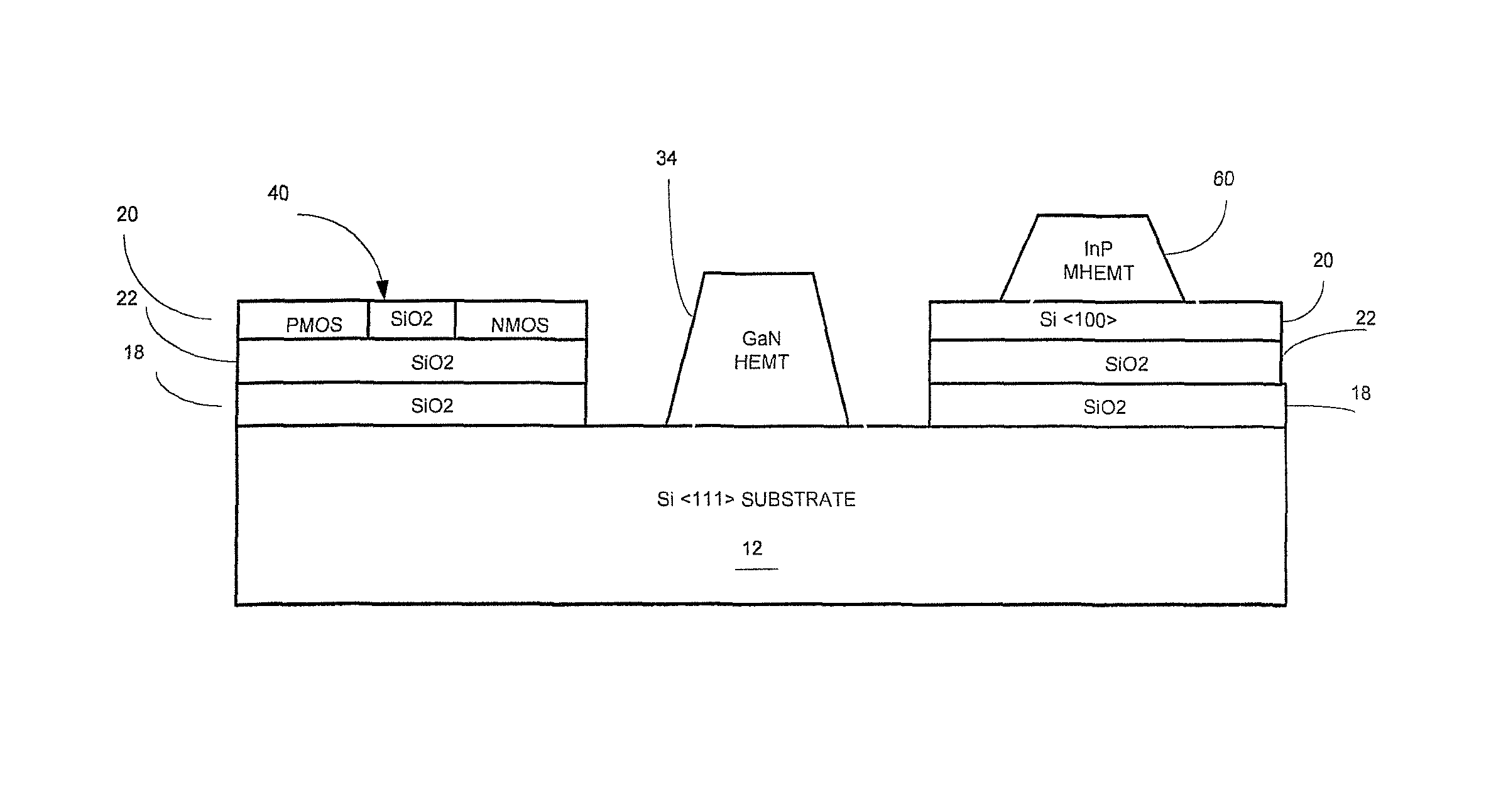Structure having silicon CMOS transistors with column III-V transistors on a common substrate
a technology of silicon cmos transistors and silicon cmos transistors, applied in the field of semiconductor structures, can solve the problems of increasing the footprint, limiting the integration complexity, and expensive processes
- Summary
- Abstract
- Description
- Claims
- Application Information
AI Technical Summary
Benefits of technology
Problems solved by technology
Method used
Image
Examples
Embodiment Construction
[0027]Referring now to FIG. 3, a pair of silicon wafers 10, 12 or substrates are shown in an exploded view. One of the substrates 12 has a crystallographic orientation (i.e., the crystallographic axis is normal to the upper surface 14 of the substrate) and the other one of the substrates 10 has a crystallographic orientation (i.e., the crystallographic axis is normal to the 16 surface of the substrate). The substrate 12 has a layer 18 of silicon dioxide formed thereof by any conventional technique.
[0028]The other substrate 10 has a silicon layer 20, in the order of several microns, of silicon with a crystallographic orientation formed on surface 16 of the substrate 10 thereof by any convention techniques such as for example epitaxial growth. The active layer 20 is doped in any conventional manner for the desired CMOS application. A layer 22 of silicon dioxide is formed by conventional deposition or growth on the silicon layer 20. The surfaces of silicon dioxide layers 18, 22 ar...
PUM
 Login to View More
Login to View More Abstract
Description
Claims
Application Information
 Login to View More
Login to View More - R&D
- Intellectual Property
- Life Sciences
- Materials
- Tech Scout
- Unparalleled Data Quality
- Higher Quality Content
- 60% Fewer Hallucinations
Browse by: Latest US Patents, China's latest patents, Technical Efficacy Thesaurus, Application Domain, Technology Topic, Popular Technical Reports.
© 2025 PatSnap. All rights reserved.Legal|Privacy policy|Modern Slavery Act Transparency Statement|Sitemap|About US| Contact US: help@patsnap.com



